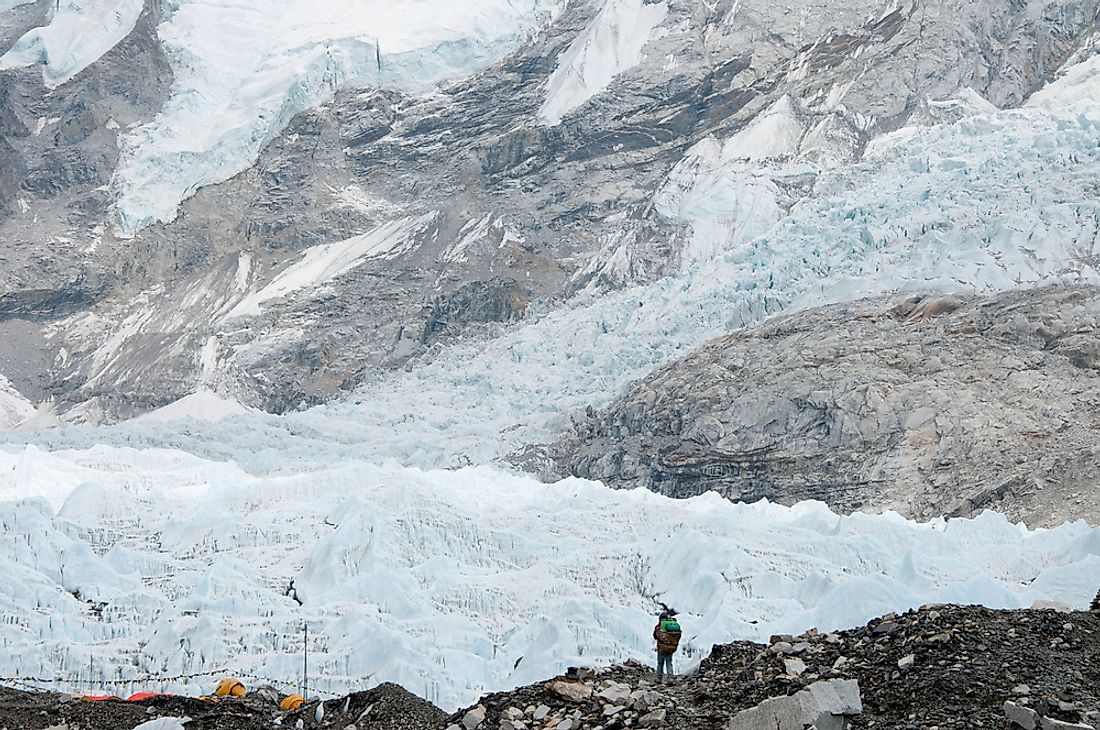What Is An Icefall?

What Is An Icefall?
An icefall is a glacial feature that is characterized by a rapid flow rate and a highly crevassed surface. Since the icefall refers to the portion of a glacier that flows over a steep slope similar to a waterfall, it is named as “icefall.”
When Is An Icefall Formed?
Usually, icefalls are formed when glaciers squeeze through narrow spaces or flow over a steep drop.
Features Of An Icefall
Ice usually flows at a faster rate in an icefall than the rest of the glacier. The steeper slope in the bedrock over which the glacier flows usually promotes such speeds of the glacier. Also, when glaciers squeeze through narrow spaces, the speed of glaciers often increases resulting in an icefall. In most cases, glaciers have ice flow at speeds of a few hundred meters per year or less. However, ice flows in an icefall at speeds measured in kilometers per year.
Due to the relative differences in speed between the upper layers of the glacier and the ice flowing in the icefall, the upper ice layers might crack up resulting in a chaotic, rugged, and dangerous surface. Thus, crevasses are common in the region of an icefall. Crevasses are created at lines of fracture between the ice. Ice towers called seracs are also common in an icefall. Seracs are formed where two fractures meet or intersect each other. However, seracs are extremely fragile in nature and might topple without warning. The glacier below the icefall flattens or widens and the flow of ice slows down. The glacier becomes easier to traverse as crevasses close up.
The Most Dangerous Icefall In The World
The Khumbu Icefall, part of the Khumbu Glacier, can be found near the glacier's top in the glacial valley basin of Western Cwm with at 17,999 ft on the slopes of Mount Everest. The icefall is close to the Everest Base Camp. The Khumbu Icefall is a region of unpredictable glacial movements where crevasses open up while seracs crumble down without warning. Large pieces of ice often fall off the glacier with great speeds. Thus, mountaineers might face great life-threatening dangers while attempting to climb Mount Everest from the South Col side. Usually, climbing the Khumbu Icefall is limited to only the first hours of daylight when the icefall is partially frozen. The danger increases as time goes on as crevasses might appear at any moment.
Several lives have been claimed by the treacherous Khumbu Icefall in the past. No amount of experience can save a climber on the Khumbu Glacier if luck fails. A climber facing an avalanche while ascending the glacier have very little to do but face death since it is not possible to run anywhere on the glacier full of crevasses and moving ice. Crevasses often remain hidden beneath snow bridges through which unwary climbers have fallen down. On some occasions, lost bodies of people who have died on the Khumbu Icefall have been recovered at the icefall's base, sometimes years after their death.
The Khumbu Icefall was the site of the 2014 Mount Everest avalanche that killed 16 climbers from Nepal. 13 bodies were recovered but the rest remained missing.







